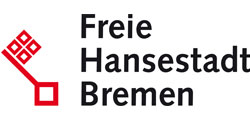ISIS
Integrated Solutions in Sensorial Structure Engineering

ISIS, short for Integrated Solutions in Sensorial Structure Engineering, joins the University of Bremen’s competencies in integrating sensors in technical components. From design of components via development of materials and production processes, processing of information and energy supply, all relevant aspects of this topic are covered. ISIS stands for the technology of sensing and the senses and will
• support sensorization in diverse fields of use by providing pioneering technical solutions.
• identify new areas of application for integrated sensors and develop practical implementation.
• advance sensor integration to the level where sensor-equipped structures become sensorial materials.
• perform fundamental and applied research and development to set new standards in safety, efficiency, robustness and reliability of technical products, and to enable new capabilities in fields like human-machine interaction.
| Duration: | 01.01.2007 till 31.12.2017 |
| Donee: | University of Bremen |
| Sponsor: |
State of Bremen
University of Bremen |
| Application Field: |
Space Robotics
Underwater Robotics Logistics, Production and Consumer SAR- & Security Robotics |
Project details
Technical components with the ability to gather data about their own state and their environment are extremely flexible in application. Their introduction and further development is currently motivated by fields like structural health monitoring (SHM), where first steps were taken by the construction industry to establish a continuous survey of bridges. New approaches in the aerospace and wind energy industry promise drastically reduced maintenance costs via concepts like “maintenance on demand”. Fatigue is a common issue in such cases, while for fibre reinforced composites, detection and evaluation of impact damage is added. To identify strength and location of impact events and to determine the remaining structural strength of the affected component in as little time as possible are major challenges in this respect. The level of interest is stressed by the fact that carbon fibre reinforced plastics (CFRP) are currently introduced to commercial airplane design on a hitherto unknown level, replacing e. g. aluminium fuselage structures.

